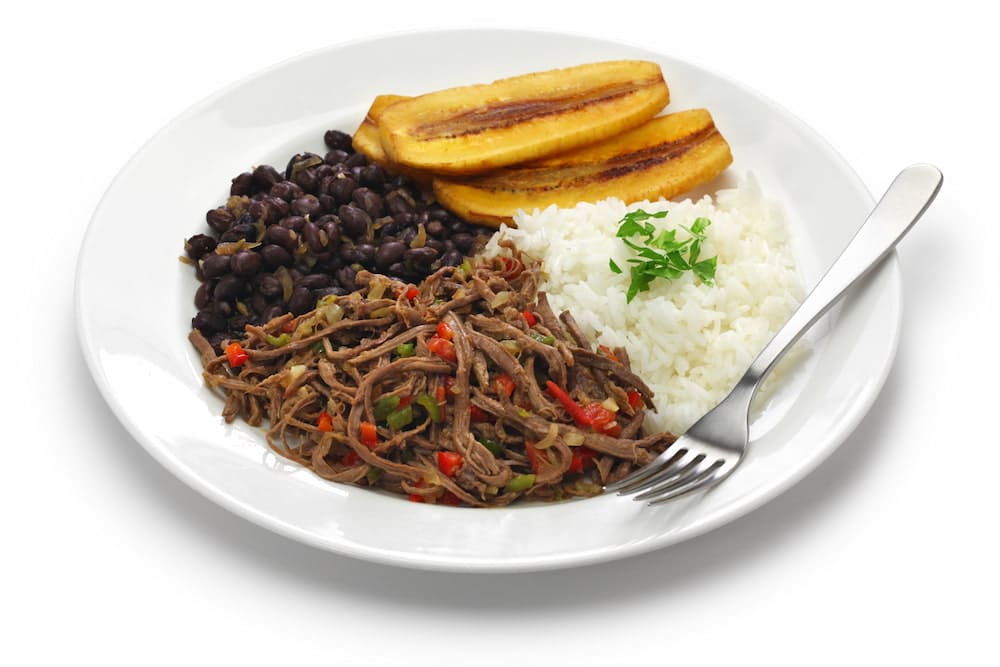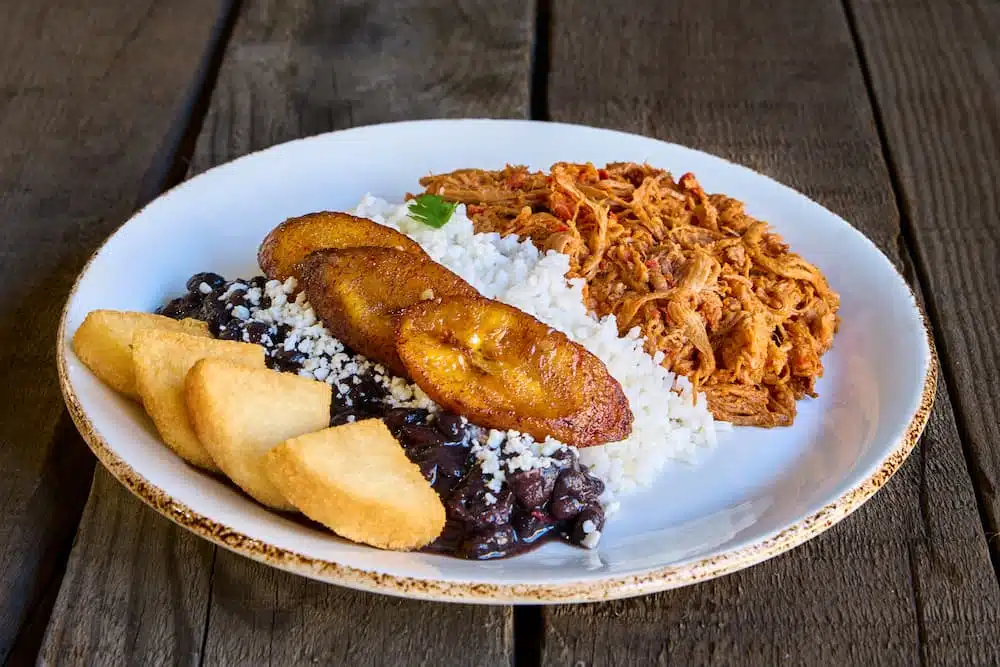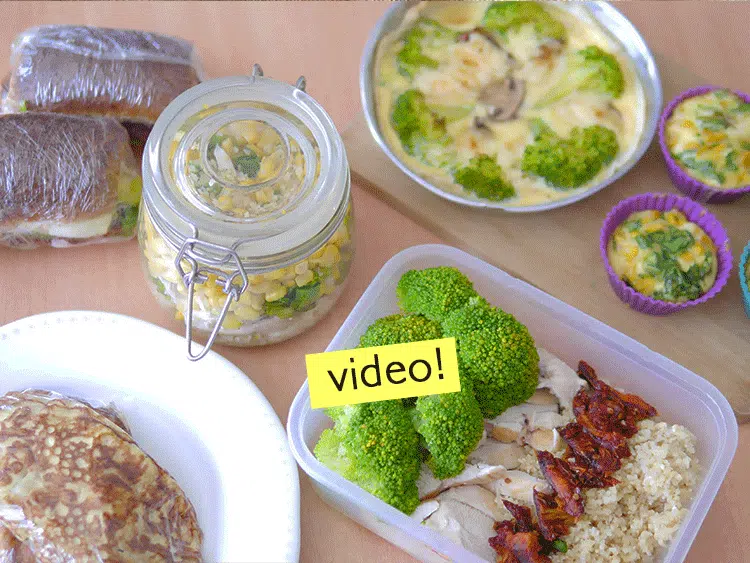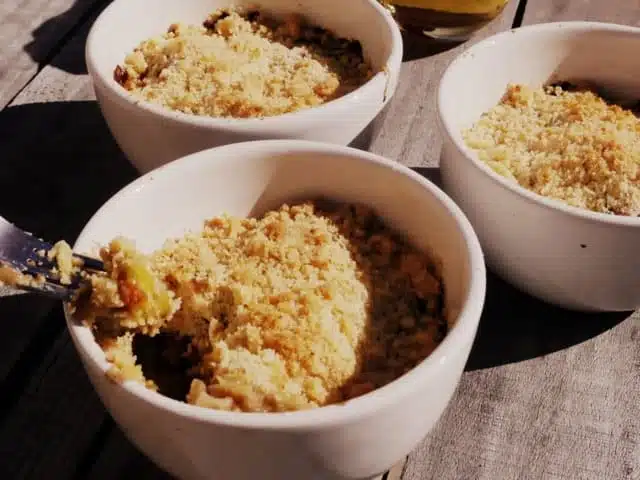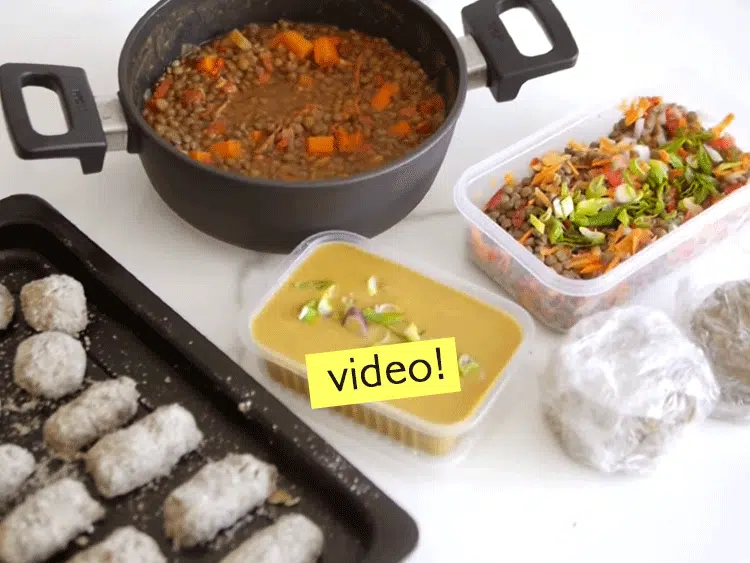Welcome and welcome to Paulina Kitchen! On this occasion we will know everything about the Creole pavilion, an iconic dish of Venezuelan food that more than a recipe is a bit of history that is eaten with pleasure.
In this note, we are going to get fully in the Creole Pavilion recipe , with all the chiches: wick meat , black caraotas , white rice and mature banana slices . All well separately on the plate, but with a mixture of flavors that are combined and integrated into each bite.
If they were looking for how to make Venezuelan Creole pavilion with all the secrets so that it is tasty, juicy and authentic, they arrived at the indicated place. Forward!
Content table
About the Creole Pavilion
The Creole pavilion has a flag name and spirit of home. It is the national dish of Venezuela and, as such, does not admit half improvisations. It is one of those meals that hug: complete, colorful and with that touch of love of Caribbean grandmother.
Each component of the Venezuelan Creole pavilion has its history, its technique and its flavor. White rice goes as a neutral base, black caraotas (yes, black beans in Venezuelan Creole) with intense and spicy flavor; The wick meat that is cooked long and slow, until it gets rid, and the slices (mature and fried banana), golden and sweet, to crown the plate.
It is a recipe full of symbology : the white of rice, the black of the caraotas, the brown of the flesh, the golden of the banana. Everything together represents a town, its roots, their struggles and their seasoning.
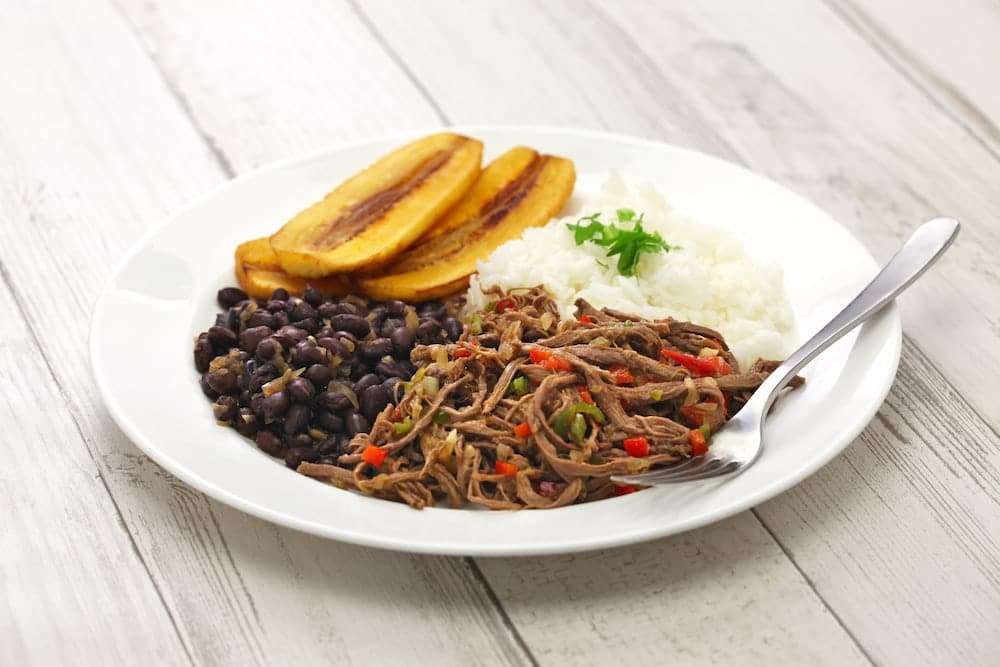
7 Characteristics of the Creole Pavilion Recipe
- It is a dish of four elements. There is no Creole pavilion without its classic quartet: rice, meat, caraotas and slices . Here the tradition sends.
- Each ingredient is cooked separately: nothing in a pot. This recipe is respected by separating the sweet from the salty , the dry of the juicy. Then the dish is assembled as if it were a work of art .
- Mechada meat is cooking over low heat: the secret is in time. The meat has to get rid of the fork, but remain juicy. Here there is no place for trouble.
- Caras are seasoned with Venezuelan Sofrito: onion, garlic, belling, cumin and a little sugar for the special touch. They cook until they are creamy but not made puree.
- The slices are ripe banana in glorious state: they are fried until golden and caramelized . They are not fried bananas, eye. And they cut to bies, with love and style.
- It is served on the plate all separate, but harmonious: it is not stirred, it is not mixed before. Each bite is an choice. Although later everyone does what they want.
- It has versions with egg or cheese: the so -called horseback on horseback carries a fried egg on top, and sometimes it also adds grated llanero cheese or arepas as a company.
The origin of the Venezuelan Creole Pavilion
They say that the Creole pavilion was born in colonial times, in the kitchens of the enslaved, who did magic with the available ingredients. The leftover meat shredded, the black beans cooked flavored, and the rice completed the plate.
That was added to banana slices and, over time, it became a national identity symbol .
His name has to do with the colors of the pavilion or flag of Venezuela , and there is no more delicious way to represent a country than with such a dish: full of nuances, tasty and generous. The Venezuelan Creole pavilion is pride served on the plate.
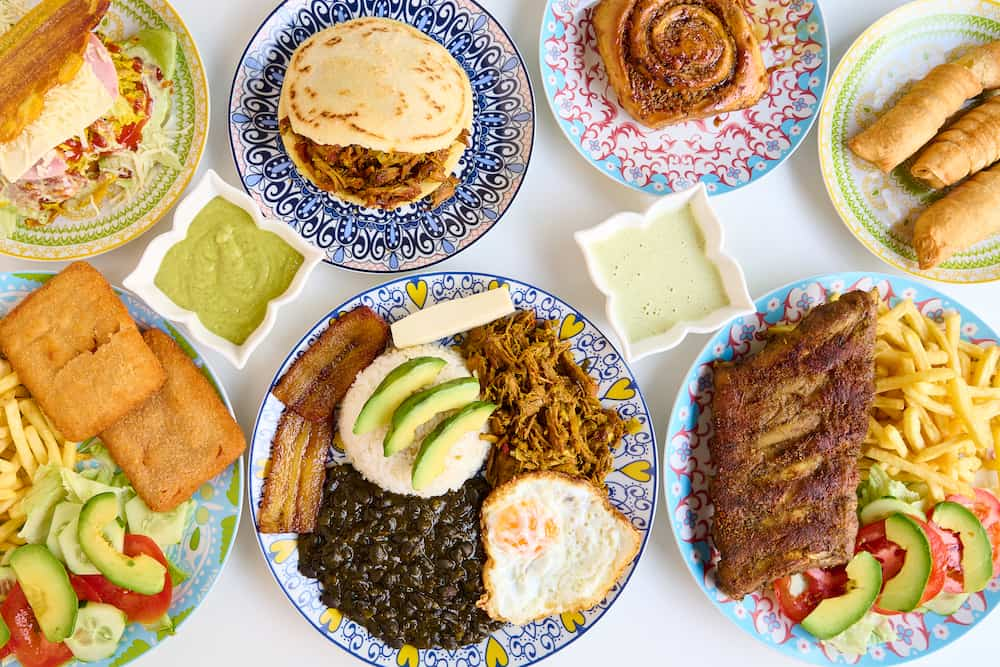
4 tasty data about the Creole pavilion
- So that the tuned meat of the Creole pavilion is juicy : you have to cook it whole first (in a pressure pot or slow fire), disseminate it and then skip it with a stir -fry and its own broth.
- The most common accompaniments of the Creole pavilion include : avocado (avocado) in slices, grated llanero cheese (hard and salty), and newly made arepas.
- Vegetarian Creole Pavilion? If possible. Instead of tuned meat, you can use textured soy or oven eggplants .
- To banana slices well well mature banana should be used , with black shell. It is cut to the bies, in thick fetas, and fry in hot oil until it is golden.
Tips and tips to make the best Creole pavilion
- Use very mature banana for slices . Not being afraid of black in the peel, that means insured sweetness.
- The rice, always white and without excess salt . It is the canvas of this work of art.
- Mechada meat can be prepared with a skirt, matambre or roast beef . The important thing is that you have some fat so that you do not dry.
- Black caraotas improve if they cook with a bay leaf and a pinch of bicarbonate, to soften.
- A good option is to advance steps cooking the caootas and the meat the day before . The next day it only remains to reheat and assemble the dish.
- The Venezuelan sauce is key : onion, garlic, sweet pepper (if it is achieved), red and cumin.
- A touch of sugar in the caootas and the slices balances the flavors perfect.
- Serve the Creole pavilion and, if possible, with an arepa next to it.
Follow on Instagram ( here )
and on YouTube that I upload new recipes every week ( click here )
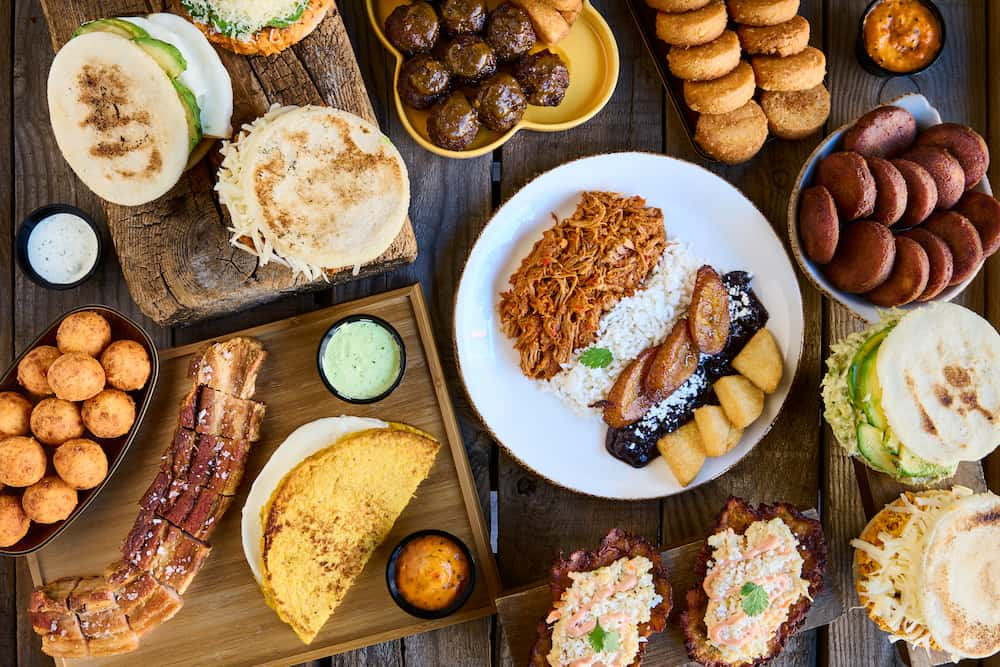
Creole pavilion recipe
Yields: 4 portions
Preparation time: 3 hours (approximately)
Ingredients
For the mechada meat:
- 600 g of meat to mechar (skirt, matambre or similar)
- 1 onion
- 1 Red belling
- 2 garlic cloves
- 2 perita tomatoes
- 1 bay leaf
- 1 cdita. of cumin
- Salt
- Pepper
- Oil
For black caraotas:
- 250 g of black beans
- 1 onion
- 1 garlic clove
- ½ Mryrd
- 1 cdita. of cumin
- 1 cdita. of sugar
- 1 bay leaf
- Salt
- Pepper
- Oil
For rice:
- 1 cup of white rice
- 2 cups of water
- Salt
For slices:
- 2 very mature bananas
- Frying oil
Extras (optional):
- Fried egg (for the pavilion on horseback)
- Avocado (avocado)
- Grated llanero cheese
- Arepas (optional)
How to make Creole pavilion step by step
- Boil the meat with salt and laurel about 1 or 2 hours, until it is very tender. Desmechar.
- Prepare a stir -fry with onion, garlic and belling, once the onion is transparent add the chopped tomatoes.
- When changing color the sofrito incorporate the meat and cook everything together with the condiments. Add a little of the meat broth if juiciness is needed. Reserve.
- Cook the beans (previously soaked from the previous night) until they are tender, about 45 minutes/1 hour. In a separate pan, make a stir -fry with chopped vegetables and add the beans. Season well and cook a few more minutes. Reserve.
- Boil rice with salt and water, until it is cooked and loose. Reserve leaving 5 minutes covered.
- Peel the bananas, cut them into slices /slice of 1 cm and fry them in hot oil until golden brown, then drain on absorbent paper.
- To assemble the dish, serve white rice, tawn meat, caraotas and slips in separate sectors. Accompany with avocado, grated cheese, fried egg or arepas, if desired.
